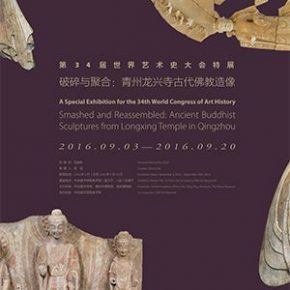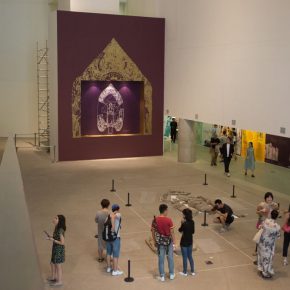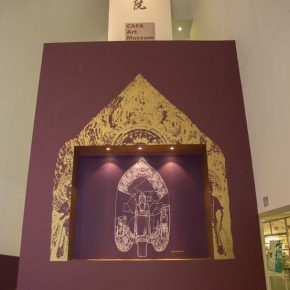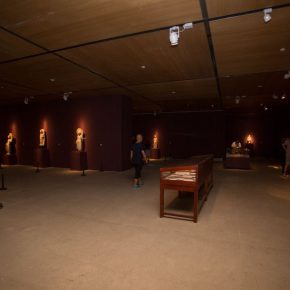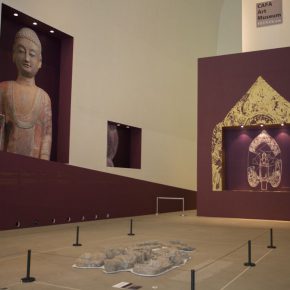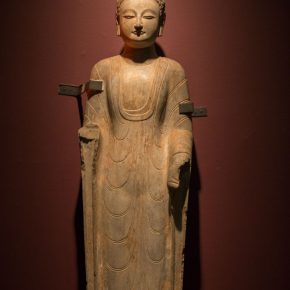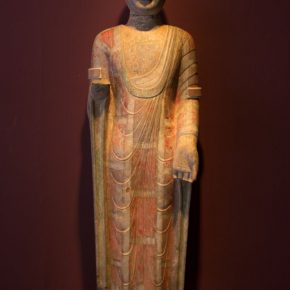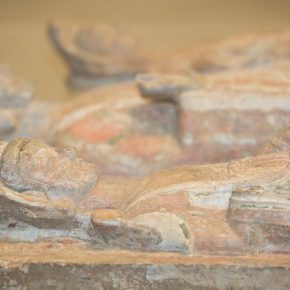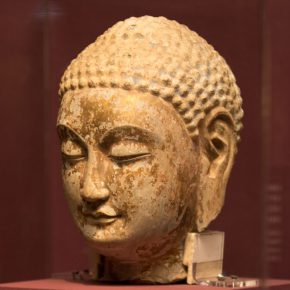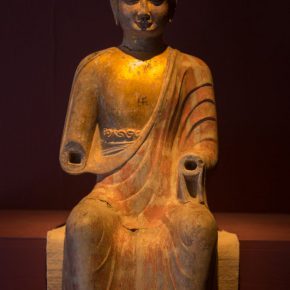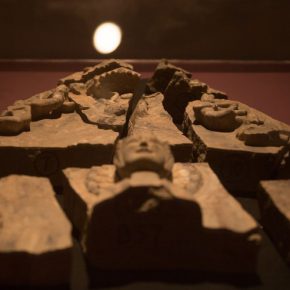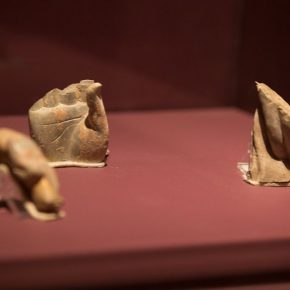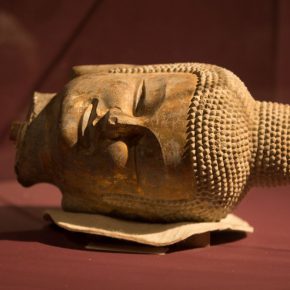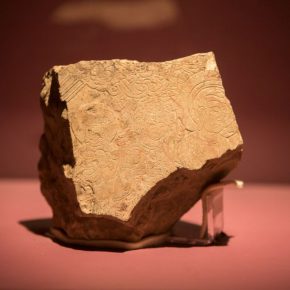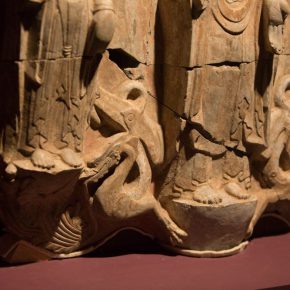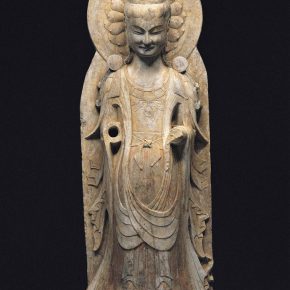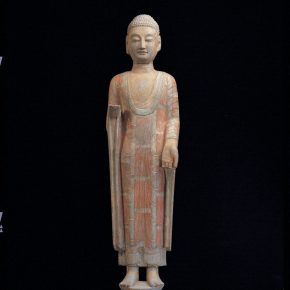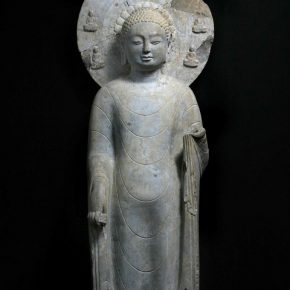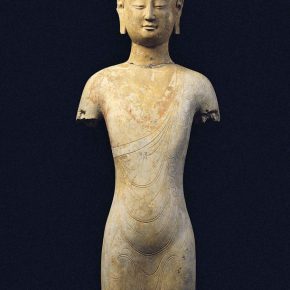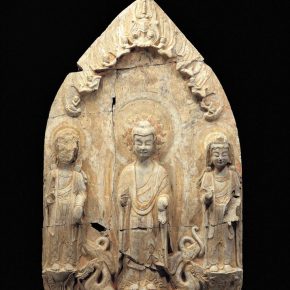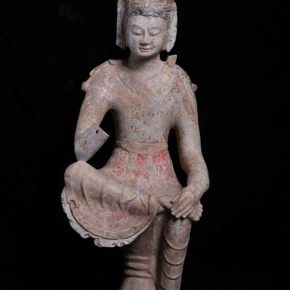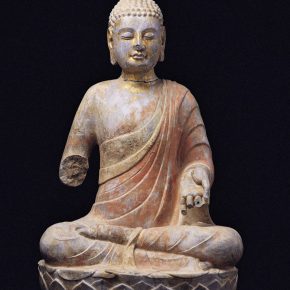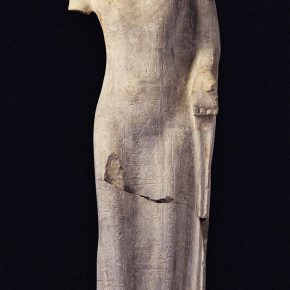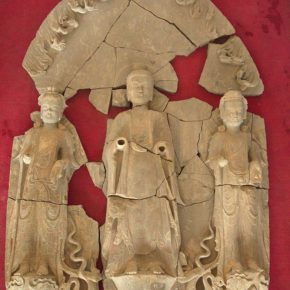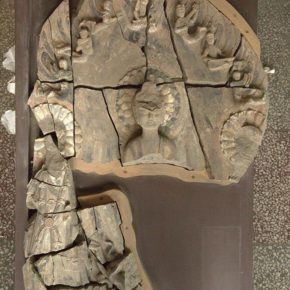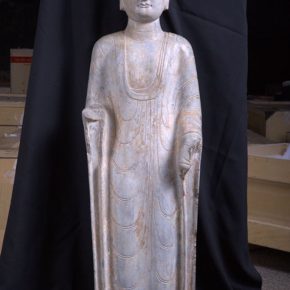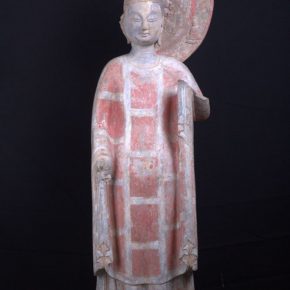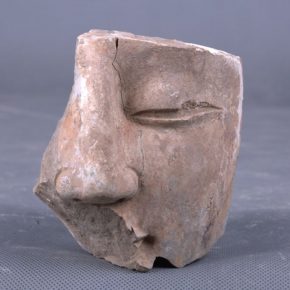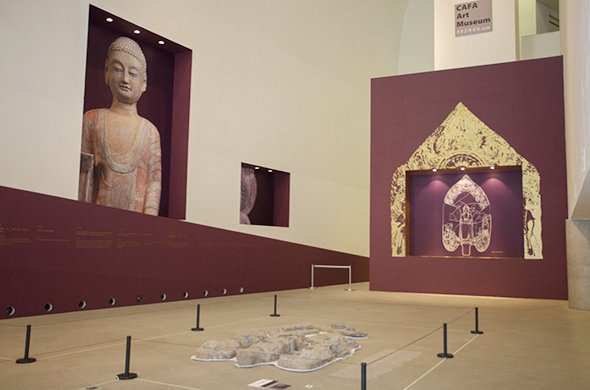
As a special project of the conference of the 34th World Conference of Art History, the “Smashed and Reassembled” exhibition presents us with a refreshing image of the mediaeval times in China. These important works of art have been exhibited overseas for 20 years, and also recorded in various versions of Chinese art history and world art tutorials. The exhibition changes the perspective, inspiring us by emphasizing the original meaning of these Buddhist statues and the way they were buried.
– Fan Di’an, President of Central Academy of Fine Arts
These statues are not only presented as an external, visual form, but have their own inherent vitality. I hope this exhibition can inspire us to start from the Chinese culture and lead to a new understanding in the meaning of artworks, while reflecting on the old concept of “sculpture”, exploring the possibility of building formal and conceptual links between traditional art and modern art.
– Curator Prof. Zheng Yan from the Central Academy of Fine Arts
On the afternoon of September 3, 2016, the special exhibition of the 34th World Conference of Art History, “Smashed and Reassembled: Ancient Buddhist Sculptures from Longxing Temple in Qingzhou” was officially unveiled to the public at CAFA Art Museum. As a special exhibition of the 34th World Conference of Art History, it is jointly hosted by the Central Academy of Fine Arts and Qingzhou Municipal Museum, organized by CAFA Art Museum. The exhibition features about 50 pieces (sets) of ancient Buddhist statues, including both the well-preserved selected statues, and part of the broken statues. The curator Prof. Zheng Yan from CAFA hopes that through “Smashed and Reassembled” to explain to the audience the meaning and value of the ancient Buddhist Sculptures from Longxing Temple in Qingzhou. At the same time, it also hopes to give the audience a different perspective for seeing the “sculpture”.
Visual Form and Vitality: The Buddhist Sculptures from Longxing Temple in Qingzhou, Shandong
The Buddhist sculptures excavated in 1996 from the Longxing Temple hoarding in Qingzhou, Shandong Province, were important archeological discoveries of the last century. The vast majority of these pieces are from the late Northern Dynasties, namely works from the sixth century that included hundreds of painted and gilded stone sculptures of the Buddha and bodhisattva. In the last twenty years, researchers have published many academic treatises on these sculptures and these pieces have been featured in dozens of exhibitions around the world, becoming an important topic in Chinese archeology and art history. Instead of interpreting the statues as “sculpture” as in the Western tradition, this exhibition presents these statues in the state they were discovered; in addition to some of the relatively intact sculptures, countless fragments were unearthed from the hoard. These fragments may have been produced by Emperor Wu in Northern Zhou Dynasty who demolished Buddhism. However, it was only in the mid-12th century that these fragments and damaged statues were carefully buried. Why was this surprisingly large number of fragments preserved for so many centuries? The answer lies within Buddhism; Buddhist icons were seen as the incarnation of the Buddha, while the fragments were also seen as “Buddhist relics” full of spiritual power, so that they should be doubly cherished and preserved. Some sutras have also suggested that these broken statues would be reassembled during a time of peace and prosperity.
These phenomena and concepts reflect a unique understanding of artworks within traditional Chinese culture, namely these sculptures have both external visual form and internal vitality. With this in mind, this exhibition presents some of the fragments, many of which will be exhibited for the first time, in addition to the more intact pieces, therefore, this exhibition also has a more important material value that will be followed closely by the related researchers.
“Terms”: Special Exhibition of the 34th World Conference on Art HistoryThe World Conference on Art History is an important meeting of the international culture and art circles, and it is jointly organized by CIHA at UNESCO and the host country every four years, it has held 33 sessions since 1873, known as the “Olympics” of international culture and Art History. After many years of effort by the preparatory group of the World Conference on Art History, the 2016 34th World Conference on Art History will be held in Beijing. The conference will showcase to the world the contemporary cultural development achievements of China, and offers a chance for the world to know and understand China through art.
The 34th World Conference on Art History is themed “Terms” (Concept: Art and Art History in Different Histories and Different Cultures). For the design theme, it highlights the Chinese artistic charm nurtured by ancient Chinese civilization and the cultural position in the world pattern, whereby to recall the same significance of the Western and Chinese civilizations from the perspective of history, forming a new understanding and interpretation of human civilization, as well as cultural and artistic heritage. The topics are divided into 21 sections, in order to inspire people to rethink the world culture and art territory in a global cultural context, re-evaluating and examining the value and contribution of Eastern and Western cultures, especially the artistic and cultural developing features of Asia, Africa and Latin America, outlining and reshaping the new face of world art.
Therefore, as the special exhibition of the 34th World Conference on Art History, it inspires us to reconsider the meaning of “sculpture” from the perspective of Chinese culture, and reconsider the existing concepts of sculpture, while exploring the possibility of building formal and conceptual links between traditional art and modern art.
The exhibition remains on view till September 20.
About the ExhibitionExhibition Time: From September 3, 2016 through to September 20, 2016
Venue: lobby of the ground floor, gallery A on the 2nd floor, CAFA Art Museum
Hosts: Central Academy of Fine Arts and Qingzhou Municipal Museum
Organizer: CAFA Art Museum
Chief Curator: Fan Di’an
Curator: Zheng Yan
Project Leader: Yue Jieqiong
Text by Yu Ya, Photo by Hu Sichen/CAFA ART INFO
Translated by Chen Peihua and edited by Sue/CAFA ART INFO


